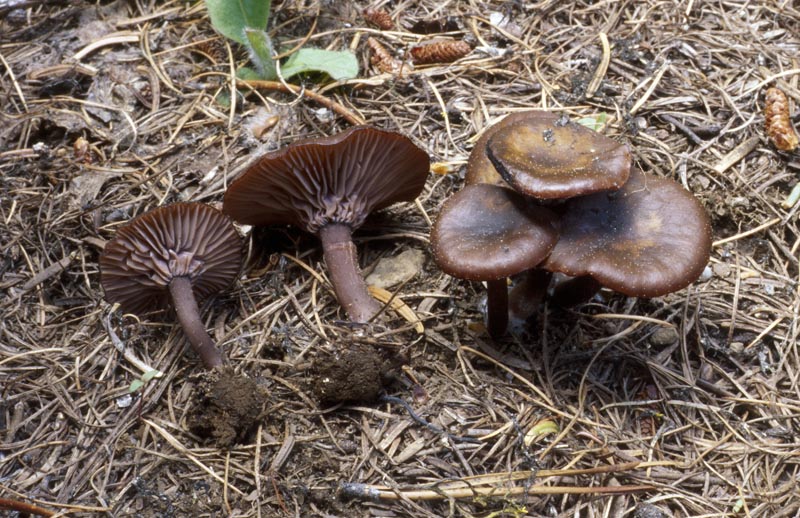Distribution: Commonly found in the mountains near melting snow but also can appear on bare soil, in meadows, or even at lower elevations under conifers, far from any snow.
Spores: amyloid spores
Conservation Status: Not of concern
The entire mushroom is about the same color, purple, violet, or vinaceous when fresh, usually with a mix of brown; the cap fades greatly in age. The gills are fairly distant and waxy, giving it the appearance of a wax-cap. It has two distinctive microscopic features---amyloid spores and vinaceous to brownish pink gill tissue when mounted in 3% potassium hydroxide. It occurs primarily in spring, but sometimes can be found in summer and fall as well. It is most peculiar that such a distinctive fungus traveled for a long time under two names, N. angelesianus (or Hygrophorus angelesianus A. H. Smith & Hesler, its original name) and Clitocybe mutabilis H. E. Bigelow.
PNW Herbaria: Specimen records of Neohygrophorus angelesianus in the Consortium of Pacific Northwest Herbaria database
CalPhotos: Neohygrophorus angelesianus photos



